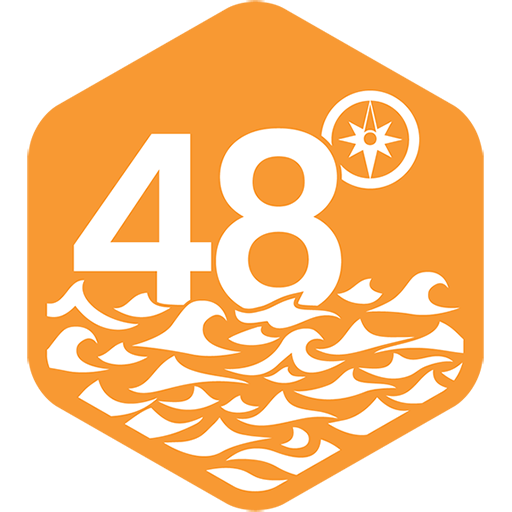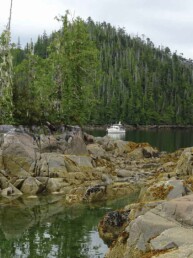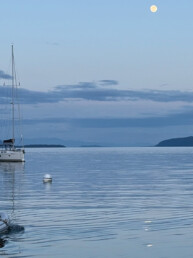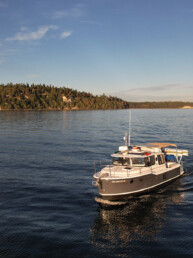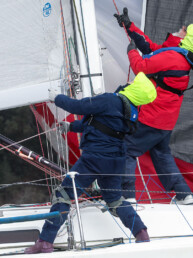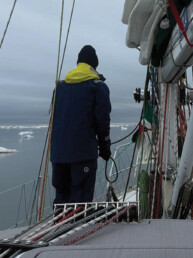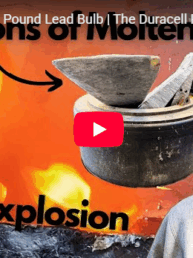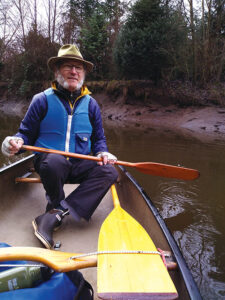 Shifting gears embodies the idea of change. Gears most often, but it can be a metaphor for changing anything. During our busy holiday season, Tekla and I were looking for a way to get outside and on the water into nature to see birds and enjoy the scenery. Of course, winter in the Pacific Northwest is not always conducive to being outdoors but, on days when conditions are tolerable, it can be spectacular. And lonely, in the best way.
Shifting gears embodies the idea of change. Gears most often, but it can be a metaphor for changing anything. During our busy holiday season, Tekla and I were looking for a way to get outside and on the water into nature to see birds and enjoy the scenery. Of course, winter in the Pacific Northwest is not always conducive to being outdoors but, on days when conditions are tolerable, it can be spectacular. And lonely, in the best way.
New Year’s Day was predicted to be rain free and calm with temps in the mid-40s, ideal for a winter adventure. Since Sea Lab is winterized and out of the water, my New Year’s Eve project was to find an interesting place to put in the canoe for the first paddle of the year. Tekla mainly wanted to see natural areas, so we talked about Nisqually Delta, Olalla Bay, and Dash Point, but I felt the urge to do something different, to shift gears.
In the olden days, our first “date” was canoeing on Hylebos Waterway followed by beers at the Tacoma landmark Java Jive, and we have not done that since. It took a little convincing, but we agreed to revisit that trip and loaded up the boat to find a put-in spot. Hylebos Waterway is not your typical picturesque paddling area. It lies on the southwest edge of Commencement Bay and is a part of the Port of Tacoma area, mostly involved in heavy industrial activities like log milling, scrap metal export, and petroleum tank farms. There are a lot of things to see but it’s not what you might consider “scenic.” It is, however, incredibly interesting.
We drove up and down Marine View Drive looking for possible launch sites and found that most of the access points have been blocked off to prevent “camping,” but we settled on a pullout where we could lower the boat down some rip-rap and into the high tide without too much difficulty. With that accomplished, we threw in the paddles and dry bag of supplies, zipped up our PFDs, and I gave the skateboard kick off into the glassy channel.
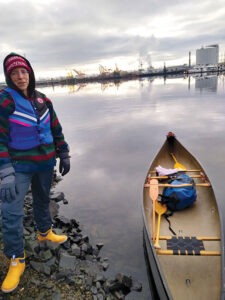 There truly was not a ripple on the water except for the pure beautiful wake of the canoe and the tiny vortices following our paddle strokes. We fell into the easy rhythm of our past and effortlessly crossed the channel to the parking lot of barges. Hulks of rust, some with plants growing in soil accumulated in their aging crevices. Nature cannot be entirely suppressed.
There truly was not a ripple on the water except for the pure beautiful wake of the canoe and the tiny vortices following our paddle strokes. We fell into the easy rhythm of our past and effortlessly crossed the channel to the parking lot of barges. Hulks of rust, some with plants growing in soil accumulated in their aging crevices. Nature cannot be entirely suppressed.
Being a holiday, there was no activity in the port. One must be cautious around industrial areas during work hours, because giant tugs, barges, and other commercial traffic can move both quickly and imperceptibly, so paddling times must be scheduled accordingly. Today we were able to wander freely along the waterway and gawk at the cranes overhead and the industry on the shores.
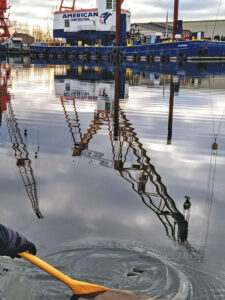
Shortly after our first crossing, we paddled into a blind corner between two barges parked perpendicular to each other, and suddenly heard the insistent sound of a big diesel engine wound up and coming fast up the waterway. We couldn’t see what it was until it came around the front of the barge and we quickly realized this to be a canoeing emergency maneuver. I had maybe 10 seconds to spin our bow into the wake of the Tacoma fireboat Defiance running at around 10-12 knots, lights flashing, going somewhere in a hurry. As I spun the bow I could see the top of the wake at least a foot above Tekla’s head, which is three feet off the water surface, and a friendly fireman waving from the inside of the cockpit. As the bow rose to meet the wake, I became rapidly aware that we were only about 20 feet from the wave reflection wall of the barge behind us and I would have little time to re-adjust to the wave that would hit us from the stern. Fortunately, our reactions were good, and the muscle memory of thousands of hours paddling saved us from rolling into the frigid January waters. That was more excitement than we had anticipated!
A few minutes prior to the fireboat zooming by, I had noted smoke rising from the metal recycling yard on the west side of the channel and, sure enough, that is where the Defiance turned in on the scene. From our vantage across the channel, it looked like a small crew on shore had controlled whatever was burning. Shortly, the Defiance turned around and began its leisurely return tour of the waterway, again waving to us as they passed, this time with no wake at all.
As we continued down the channel, we passed sand bars and banks adorned with one of my favorite trees, the Pacific madrone, with its smooth muscular trunks of shiny orange bark—an unmistakable native Northwest tree iconic to our bluffs and shorelines, that’s often used as a perch by the belted kingfisher for a good view of lunch just below the water’s surface. We also passed all manner of human industry, reminding us of the cost to natural areas, and it’s in stark contrast to the kinds of places we usually haunt. At some point in history, this channel was undoubtedly a shallow estuary filled with bird life and an abundance of marine animals that live in intertidal areas, like this one at the entry point of Hylebos Creek.
In our previous tours of this waterway, we had ended in the turning basin at the end. This time, we decided to see if we could paddle up the creek itself and see how far we could get. The creek enters the waterway in a straight dredged channel and opens into a wide-open meandering stream resolving into a beautifully restored natural area called the Place of Circling Waters.
This is the site of a former gravel mine which, at some point, closed and became what the Port euphemistically called an “inert waste storage area.” Some 255,000 tons of contaminated soil were removed, along with 7,800 tons of broken concrete, waste building materials, and invasive plants, and was replaced by winding channels and 35,000 native trees and shrubs. The $13 million project was directed in collaboration with the Puyallup Tribe who named the area Twulshootseed, which means Place of Circling Waters. Dedication of the project occurred in 2011 and won design awards for wetlands restoration and mitigation. The Port of Tacoma has a very informative website about public access to lands managed by the port authority—worth looking at!
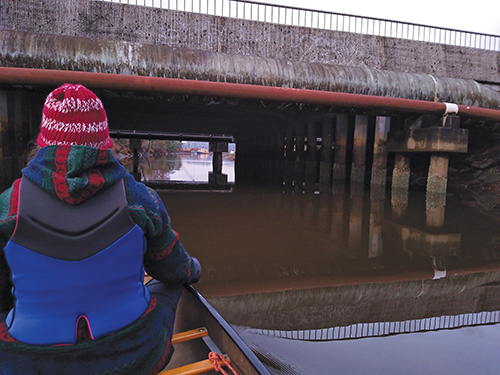
Today, 14 years after the project’s completion, the place is filled with ducks of many species and many other birds we witnessed on our paddle day. I’m no duck expert, but there were a lot of ducks that I don’t commonly see. We did not have binoculars, but if we go back I will certainly bring them. It was quite spectacular and satisfied our need to be out in nature for the day.
We reached an end point of exploration on the water, and we turned to follow the flow of Hylebos Creek back to the urban jungle and the colorful sights of industry made photogenic in the rippled reflections off the water. Even though we were well dressed for the weather, four hours of winter paddling in a canoe had given us cold feet and stiff knees, and by the time we got back to the truck at the put-in we had to walk back and forth for a while to loosen up enough to get the boat out and loaded.
A mile or so before we landed, I had begun to think of warm coffee and French fries, and suggested we hit the SandBar and Grill, one of our old stopping points on our way home from Tyee Marina where Sea Lab was formerly moored. We got the boat tied on and the heater cranked up, and made the 2-minute drive to the SandBar and were welcomed with cups of hot coffee to warm our hands, beer to warm our hearts, and plenty of fries to clog those warm hearts. There are also several nicely framed old photographs of Hylebos Waterway lining the walls of the SandBar showing activity in the port from times past. I’m a sucker for old photos and some of these were real gems.
Looking at charts and Google Earth when we got home, I determined we paddled a little over 6 miles. I was happy that we had shifted gears and started 2025 on the water, one way or another!
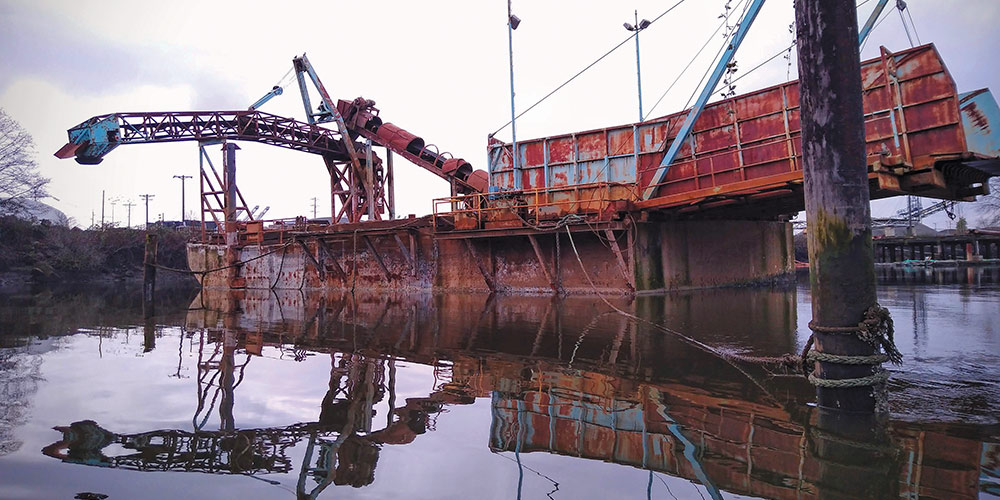
Dennis, Tekla, and Tim Tim the sailor dog recently changed their home cruising waters from Tacoma to Case Inlet.
Dennis Bottemiller
Dennis and his mate, Tekla, reside in Auburn, Washington and usually launch from Point Defiance to spend time on Sea Lab, their C-Dory 22 affectionately nicknamed “Boatswagen Bus.” When not playing with boats or guitars, Dennis can be found tending tropical Rhododendrons at the Rhododendron Species Botanical Garden.
